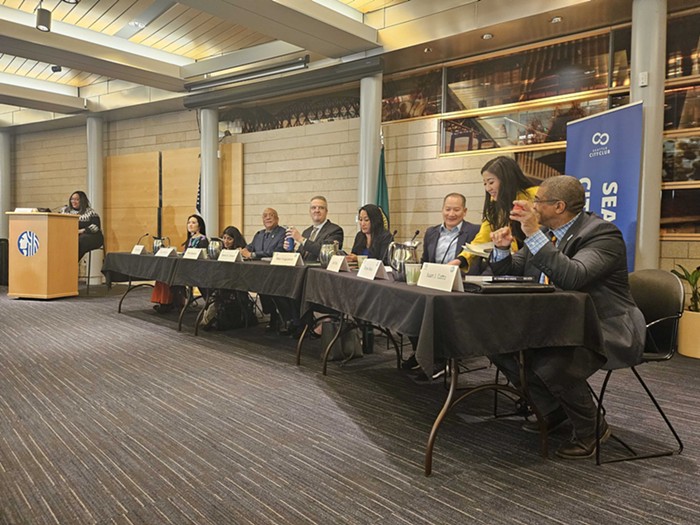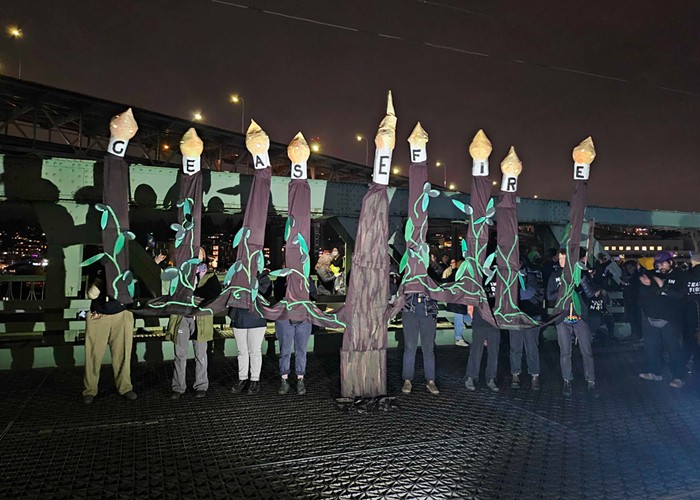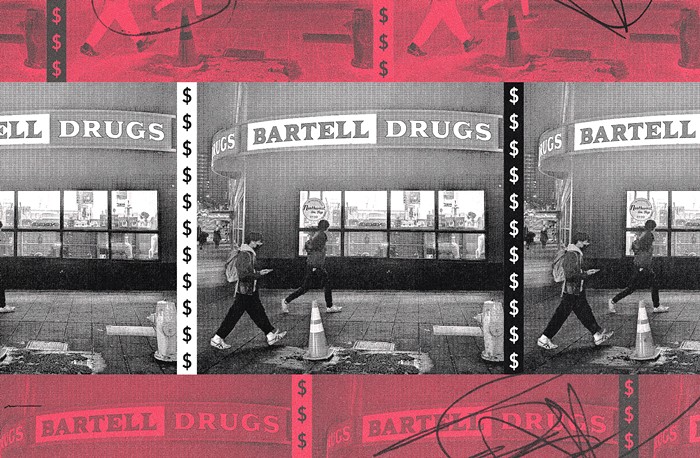This June, students will flee their classrooms for summer vacation, but they won't be returning to five buildings owned by Seattle Public Schools. The school board, citing an estimated $24 million budget shortfall, voted January 29 to close the buildings.
Now, another question presses: What should be done with all these big, empty buildings?
Nova High School, on 1.76 acres, must move out of the Horace Mann Building—a 1901 structure in the Central District. T.T. Minor Elementary will also be vacant next September. Located on 2.1 acres atop a high ridge in the Central District, T.T. Minor has views of mountain ranges in both directions and a stunning vantage of downtown.
"Can you imagine how much T.T. Minor would go for as condos?" Jesse Hagopian asks with dread. A teacher at Madison Middle School and a cofounder of Educators, Students, and Parents for a Better Vision of the Seattle Schools, Hagopian wants the school to stay open—ideally as a school, but if not, then for community use.
"Empty buildings don't help anybody," says city council member Sally Clark, chair of the council's land-use committee. "It is bad for the neighborhood in general because [empty buildings] would, I believe, encourage graffiti and attract people who are looking to hang out next to dark, empty buildings."
But the school district currently lacks a plan. "Right now it is too early to determine" what will happen to the buildings, Seattle Public Schools spokesman David Tucker says.
Historically, the district has unloaded much of its surplus property. In the 1980s, the school district sold the iconic former Queen Anne High School for use as apartments, later turned into luxury condos, to the chagrin of some neighboring residents. And in 2007, the city council allocated $12 million to buy school properties, such as the Allen Elementary School building, which sold for more than $3 million this past October and is now used as a community center by the Phinney Neighborhood Association.
However, continuing to sell old buildings may not serve the district's long-term interests, Tucker says. "We have to have the land and resources to meet the needs of future students."
Indeed, according to a March 2008 enrollment-projection report by the school district, the number of school-age kids in Central Seattle—in the vicinity of two of the closed buildings—could increase by 11 to 100 percent by 2012. The city's long-term plan calls for increasing density in the central city while remaining welcoming for families.
Selling school buildings in a growing city is shortsighted. Leaving schools vacant may attract crime. And maintaining vacant buildings already costs the district $100,000 each year, according to a report in the Seattle Post-Intelligencer. The school district should keep the properties—and find tenants to occupy them until the district needs them again as schools.
"I would love to see it turned into a community center. We need one desperately," Judith Edwards, a resident of Beacon Hill, says about Van Asselt Elementary (2.5 acres), located a mile from her house and slated to close. "I would love to see it turned into a place for performing arts, a place for classes, and a place where community groups would meet." The neighborhood library has a meeting room, she says, but it has a six-month waiting list.
Old buildings can be repurposed as performance venues, coffee shops, community meeting spaces, and offices—not just bunkers for wayward teens. Install Wi-Fi, rent rooms to church groups on Sundays, and open the playfields to sports teams clamoring for the ball fields.
Where community centers don't make sense, the buildings could be converted—not into expensive condos, but into low-income housing or even workplaces. After sitting vacant for 20 years, the Colman School building, near the I-90 lid, was converted into a mixed-use building that includes 36 low-income apartments. Former schools "give people the opportunity to live in neighborhoods where they have access to services and grocery stores," says Sarah Lewontin, executive director of Housing Resources Group, which helped convert the building. "Working people [need to] live where they can get to work." ![]()



















